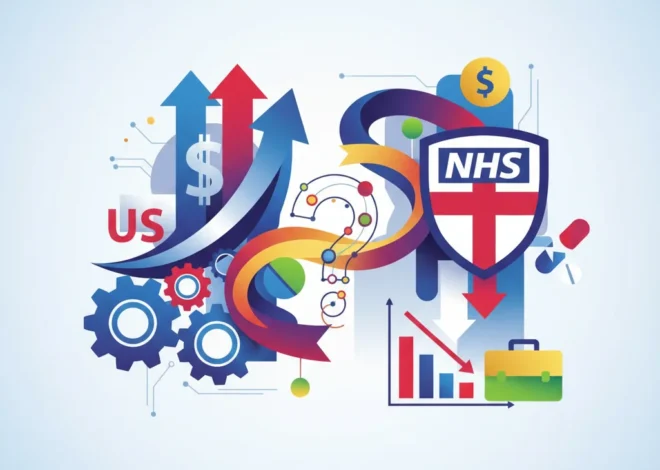
Canada’s C$141 Billion Gambit: A High-Stakes Economic Shield Against US Trade Wars
A Bold Economic Counter-Offensive
In a world increasingly defined by geopolitical friction and economic rivalry, nations are often forced to make bold, strategic moves. Canada has just placed its bet. In a decisive and audacious response to the ongoing pressures of US protectionist trade policies, the Canadian government has unveiled its first budget, featuring a staggering C$141 billion fiscal stimulus package. This monumental investment is designed to insulate the nation’s economy from the sharp edges of a trade war, but it comes at a significant cost: the country’s deficit is projected to nearly double.
This move is more than just a line item in a budget; it’s a fundamental statement about Canada’s economic sovereignty and its strategy for navigating a turbulent global landscape. It’s a high-stakes gambit that will have profound implications for every facet of the Canadian economy, from the largest corporations to the average household. For investors, business leaders, and finance professionals, understanding the intricacies of this plan is not just important—it’s critical for what comes next in the North American financial ecosystem.
This deep dive will dissect Canada’s C$141 billion economic shield. We’ll explore the strategic rationale behind this massive spending, analyze its potential impact on the stock market and investment landscapes, and weigh the long-term consequences of its most significant side effect: a massive increase in national debt.
The ‘Why’ Behind the War Chest: Countering Economic Aggression
To grasp the magnitude of this C$141 billion pledge, one must first understand the battlefield. The spectre of the “Trump-era” trade wars, characterized by tariffs on key Canadian exports like steel, aluminum, and softwood lumber, created significant headwinds for Canadian industries. These protectionist measures disrupt supply chains, increase costs for businesses, and create a climate of uncertainty that chills investment and hiring.
A conventional response might involve retaliatory tariffs, sparking a tit-for-tat escalation that often harms all parties involved. However, Canada’s strategy appears to be different. Instead of just fighting fire with fire at the border, the government is choosing to reinforce its domestic economic foundations. The logic is clear: if external demand from a key trading partner becomes unreliable, the solution is to stimulate internal demand and enhance domestic competitiveness. This fiscal stimulus is, in essence, an economic shock absorber, designed to cushion the blow from external trade disputes and reorient the economy towards domestic growth and innovation.
This approach signals a strategic pivot, prioritizing national economic resilience over direct trade retaliation. It’s a move that acknowledges the deep integration of the US-Canadian economies while simultaneously attempting to build a buffer against the volatility that has recently defined that relationship.
Defying the Downturn: A Deep Dive into the UK's New Investment-Led Growth Strategy
Anatomy of a C$141 Billion Stimulus: Where is the Money Going?
A stimulus package of this size is a complex financial instrument with the power to reshape industries. While the full, granular details are emerging, the allocation is expected to be strategic, targeting the areas most affected by trade friction and those with the highest potential for long-term growth. The objective is twofold: provide immediate relief and foster future-proof industries.
Below is a potential breakdown of how these funds could be allocated to achieve the government’s economic objectives.
| Pillar of Investment | Potential Allocation (Estimated) | Strategic Goal |
|---|---|---|
| Direct Industry Support & Competitiveness | C$45 Billion | Provide grants, tax credits, and subsidies to sectors hit by tariffs (e.g., manufacturing, steel, agriculture) to maintain operations and global competitiveness. |
| Infrastructure Modernization | C$40 Billion | Invest in transportation, green energy, and digital infrastructure to reduce long-term business costs and attract private investment. |
| Innovation, Technology & Diversification | C$30 Billion | Fund R&D in high-growth sectors like AI, clean energy, and financial technology (fintech) to diversify the economy away from traditional industries. This could include grants for blockchain supply chain solutions. |
| Workforce Development & Support | C$26 Billion | Invest in retraining programs, enhanced employment insurance, and skills development for workers in transitioning industries, ensuring a just transition. |
This multi-pronged approach demonstrates a sophisticated understanding of modern economics. It’s not just about spending money; it’s about targeted investments designed to produce a multiplier effect, where each dollar spent generates more than a dollar in economic activity.
The Ripple Effect: What This Means for Investors and the Markets
A C$141 billion injection into the economy will inevitably create winners and losers. For astute investors, understanding these dynamics is key to navigating the changing landscape.
- Stock Market Opportunities: Sectors targeted by the stimulus are poised to benefit. Look for potential growth in industrial and materials stocks (from infrastructure spending), technology companies (especially in cleantech and fintech), and engineering and construction firms. The broad-based support could also boost consumer discretionary stocks if it successfully shores up employment and consumer confidence.
- The Canadian Dollar (CAD): The “Loonie” faces a tug-of-war. On one hand, massive government borrowing and spending can be inflationary, which typically devalues a currency. The ballooning deficit is a major headwind. On the other hand, if the stimulus successfully boosts economic growth relative to peers, it could attract foreign investment, providing support for the dollar. Expect volatility as the market digests these conflicting forces.
- Banking and Bonds: The government will finance this spending by issuing a massive amount of new bonds. This increased supply will likely push bond prices down and yields up. This is a crucial development for the banking sector, as it affects lending rates. For fixed-income investors, this may present opportunities to lock in higher yields, but it also signals a riskier fiscal environment. According to the initial report, the scale of this new debt will be a primary focus for credit rating agencies.
- The Rise of Fintech: A significant portion of this stimulus will likely be disbursed through new programs and grants. This creates a massive opportunity for fintech companies to partner with the government to build more efficient, transparent, and accessible platforms for distributing funds, managing applications, and tracking impact. This could accelerate the modernization of government financial services.
The £20 Billion Tightrope: Can the Next UK Government Avert a Fiscal Crisis?
The Price of Security: A Deficit Set to Double
There is no such thing as a free lunch in economics. The C$141 billion shield is being paid for with debt. The plan will, as the Financial Times noted, nearly double the country’s deficit. This is perhaps the most significant long-term risk associated with the strategy.
A higher deficit and accumulating national debt have several downstream consequences:
- Increased Debt Servicing Costs: A larger portion of future government revenue will be diverted to paying interest on the debt, leaving less for essential services like healthcare, education, and future infrastructure projects.
- Risk of a Credit Downgrade: International credit rating agencies will be watching Canada’s fiscal path closely. A downgrade could increase borrowing costs for the government and Canadian corporations, creating a drag on the entire economy.
- Reduced Future Flexibility: A high debt load limits the government’s ability to respond to the *next* crisis, be it a recession, a pandemic, or another geopolitical event. Fiscal firepower, once used, takes a long time to replenish.
- Intergenerational Equity: Critics will argue that this strategy mortgages the country’s future, leaving the next generation to pay for today’s economic security.
The government’s calculation is that the cost of inaction—allowing key industries to wither under trade pressure and risking a recession—is far greater than the long-term cost of this debt. It’s a classic short-term versus long-term trade-off that will be debated for years to come.
AI and the Economy: Separating Layoff Hype from Labor Market Reality
Conclusion: Canada’s Audacious Path Forward
Canada’s C$141 billion fiscal stimulus is one of the most significant economic policy decisions in its recent history. It is a direct, forceful response to a changing global order, one where economic interdependence can no longer be taken for granted. The plan is an ambitious attempt to protect jobs, spur innovation, and build a more resilient domestic economy.
However, it is also a path fraught with risk. The doubling of the deficit raises serious questions about long-term fiscal sustainability and the potential for future inflation. The success of this grand experiment will depend on disciplined execution, the global economic climate, and whether these investments can generate a return—in the form of sustained economic growth—that ultimately outweighs their enormous cost.
For the world of international finance and investing, Canada has just become a crucial case study in 21st-century economic statecraft. The world will be watching to see if this C$141 billion bet pays off.


